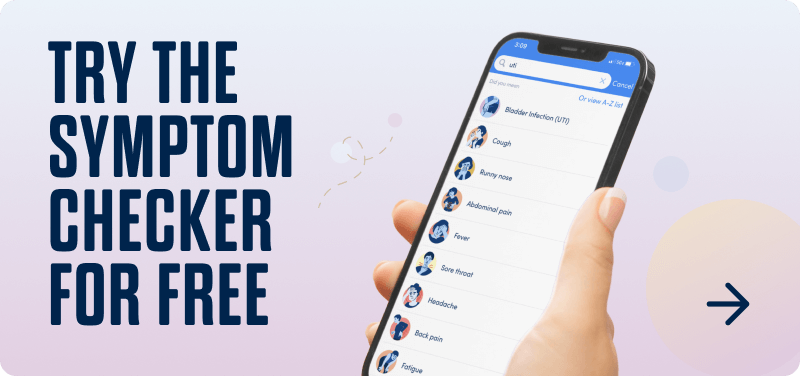Gout is a painful type of arthritis that feels similar to the pain experienced with rheumatoid arthritis, as both diseases cause inflammation in the joints.
Gout is caused by a buildup of uric acid in the blood.
When the body cannot get rid of the excess uric acid, that buildup ends up accumulating as crystals in a joint, such as the big toe.
This creates swelling, redness, warmth, and severe joint pain in the affected area.
This condition has historically been seen as a disease that only affects old, wealthy men.
But in fact, gout is the most common form of inflammatory arthritis.
About 4% of Americans—more than 8 million people—suffer from gout.
Since gout can be caused by genetic, environmental, and lifestyle factors, anyone can get gout—even if they eat what would typically be deemed a healthy diet.
Attacks and flare-ups of the condition can be painful.
While there is no cure for gout, there are things you can do to get relief from the pain and inflammation.
In this article, I’ll talk about ways to get fast relief from a gout attack, treatment options for these flare-ups, and warning signs that an attack may be coming.
I’ll also tell you when it’s best to talk to your doctor or another healthcare provider about gout symptoms.
How to Get Fast Relief From Gout Attacks
Gout pain can be debilitating, and can prevent you from performing routine activities—even walking or standing can hurt.
That’s because many attacks start at the base of the big toe.
Pain and inflammation in this region can make walking or standing for long periods of time excruciating.
There are a few home remedies that may provide quick relief for a gout flare-up.
But if your pain is severe, sudden, or worsening, contact a healthcare professional before attempting any remedies at home.
Got Gout?
Try K Health and feel better fast. Doctors available 2/47:
- Fast: Chat with a doctor in minutes
- Easy: On your phone, on your schedule
- Reliable: Advice, prescriptions, and referrals
Over-the-counter pain relievers
Nonsteroidal anti-inflammatory drugs (NSAIDs) like ibuprofen (Advil) and naproxen (Aleve) can help relieve gout pain and swelling.
It may take some time for the relief to kick in—anywhere up to 24 hours.
Topical rubs containing capsaicin or other soothing ingredients (like aspercreme, Icy Hot, etc.) can help with both pain and inflammation when applied on the swollen areas.
Apply ice to the affected joints
One of the easiest natural ways to reduce inflammation in a gout attack is by applying ice to the affected area.
Ice may also help numb the pain in the affected area.
Drink plenty of water
This won’t likely provide immediate relief, but inadequate hydration is known to contribute towards the creation of urate crystals.
Drinking water may flush uric acid crystals out of your system.
Preliminary research suggests that adequate water consumption during the 24-hour period before a gout flare can decrease recurrent gout attacks.
Prescription Treatments
If your gout pain is unbearable even with the recommended over-the-counter treatments, prescription anti-inflammatories like Indomethacin and Colchicine may be needed.
A short course of a corticosteroid like prednisone or methylprednisolone can also be helpful.
While long-term use of corticosteroids can cause some problematic side effects and health issues, short-term use is generally considered safe.
If your gout symptoms are severe and not improving with over-the-counter and home remedies, speak with a doctor or healthcare provider to see if a prescription treatment may be helpful.
Treatment for Chronic Gout
If you have chronic gout, you may need more than quick relief.
You’ll also likely need a long-term treatment plan to prevent future attacks.
Below are a few treatment options that your doctor may recommend.
Medications for gout
Usually, doctors will wait until a gout attack subsides before starting prescription medications.
This is because these drugs are designed to lower uric acid levels.
Sometimes that can cause existing crystals surrounding the joints to shift, exacerbating the flare-up.
Once a flare-up has ended, your prescribed medication treatment plan can prevent future gout attacks.
Below are a few common medications for gout:
| Medication | Brand Names | Form | How It Works |
| Allopurinol | Aloprim, Zyloprim, Lopurin | Pill | Reduces how much uric acid the body produces |
| Febuxostat | Uloric | Pill | Reduces how much uric acid the body produces |
| Probenecid | Probalan | Pill | Acts on the kidneys to help the body eliminate uric acid via the urine. May be combined with Febuxostat. |
| Pegloticase | Krystexxa | Intravenous (IV) infusion | Reduces uric acid quickly with great intensity. Used when standard medications are unable to lower uric acid levels. |
Diet changes
Before modern medicine, doctors assumed dietary choices were to blame for gout attacks.
They weren’t wrong: A diet that’s high in purines—chemicals that are metabolized into uric acid—can cause gout flares.
Historically, gout was referred to as “the disease of kings” because a heavy purine diet一alcohol, organ meats, sugar一could only be afforded by the wealthy.
Common high-purine foods you may want to avoid if you have gout include:
- High fructose corn syrup: This includes snacks and sugary drinks like soft drinks.
- Alcoholic beverages: Consuming too much alcohol is dehydrating for the body and can increase uric acid levels in the body.
- Organ meats: Meats like liver and kidney are purine-rich foods that should be avoided.
- Red meat: Serving sizes of red meat should be limited.
Following a diet low in purines can help prevent gout flares.
If you’re unsure of what you should and shouldn’t eat, discuss meal plan options with your doctor or a dietitian.
Lifestyle changes
Experts recommend that adults engage in 150 minutes of exercise per week.
This can include low-impact activities that are easy on the joints, like walking, swimming, or biking.
Engaging in regular physical activity, along with eating a healthy diet, can help you lose weight.
Since obesity is a risk factor for gout, this could also reduce your risk of flare-ups.
Warning Signs of a Gout Flare-Up
Gout flare-ups tend to come on suddenly.
A flare-up will usually occur in one localized area—usually the big toe, but it can also affect other joints like the ankles, knees, elbows, wrists, or fingers.
Some symptoms you may experience include:
- Joint pain
- Inflammation
- Redness
- Swelling
- Loss of mobility
When it comes to gout prevention, get to know your family’s general medical history.
Genetics plays a big role in your chances of developing gout, so it’s a good idea to get familiar with your family history of gout.
Other risk factors include:
- Sex: Men are three times more likely than women to develop gout.
- Age: Men over 40 and post-menopausal women are more likely to develop gout.
- Weight: People who are obese are at a greater risk of developing gout.
- Medical conditions: People with high blood pressure, diabetes, insulin resistance, or heart and kidney diseases are at a greater risk of developing gout.
- Alcohol consumption: Alcohol is dehydrating. The risk of developing gout increases as alcohol consumption goes up.
If you have a family history of gout or fall into multiple risk factor groups, discuss prevention with your doctor.
A low-purine diet is typically recommended to help keep uric acid levels in your body low.
Got Gout?
Try K Health and feel better fast. Doctors available 2/47:
- Fast: Chat with a doctor in minutes
- Easy: On your phone, on your schedule
- Reliable: Advice, prescriptions, and referrals
When to See a Doctor
If you are experiencing severe gout symptoms, seek care immediately.
Gout triggers and gout attacks are different for everyone, so a physician will be able to tailor a plan of treatment and prevention that works best for you.
How K Health Can Help
Did you know you can access online urgent care with K Health?
Check your symptoms, explore conditions and treatments, and if needed, text with a healthcare provider in minutes.
K Health’s AI-powered app is based on 20 years of clinical data.
Frequently Asked Questions
K Health has strict sourcing guidelines and relies on peer-reviewed studies, academic research institutions, and medical associations. We avoid using tertiary references.
-
Treatment Options for Gout. (2017).
https://www.ncbi.nlm.nih.gov/pmc/articles/PMC5624445/ -
Gout. (n.d.).
https://www.arthritis.org/diseases/gout -
Gout. Epidemiology of gout. (2010).
https://www.ncbi.nlm.nih.gov/pmc/articles/PMC3046529/ -
Gout and hyperuricaemia in the USA: prevalence and trends. (2019).
https://pubmed.ncbi.nlm.nih.gov/31168609/ -
Gout. (2010).
https://www.cdc.gov/arthritis/basics/gout.html -
Alcohol quantity and type on risk of recurrent gout attacks: An internet-based case-crossover study. (2014).
https://www.ncbi.nlm.nih.gov/pmc/articles/PMC3991555/ -
Nonpharmacological Management of Gout and Hyperuricemia: Hints for Better Lifestyle. (2015).
https://www.ncbi.nlm.nih.gov/pmc/articles/PMC6125106/

 Medically reviewed
Medically reviewed
